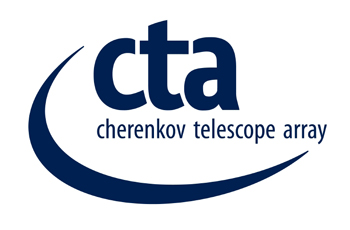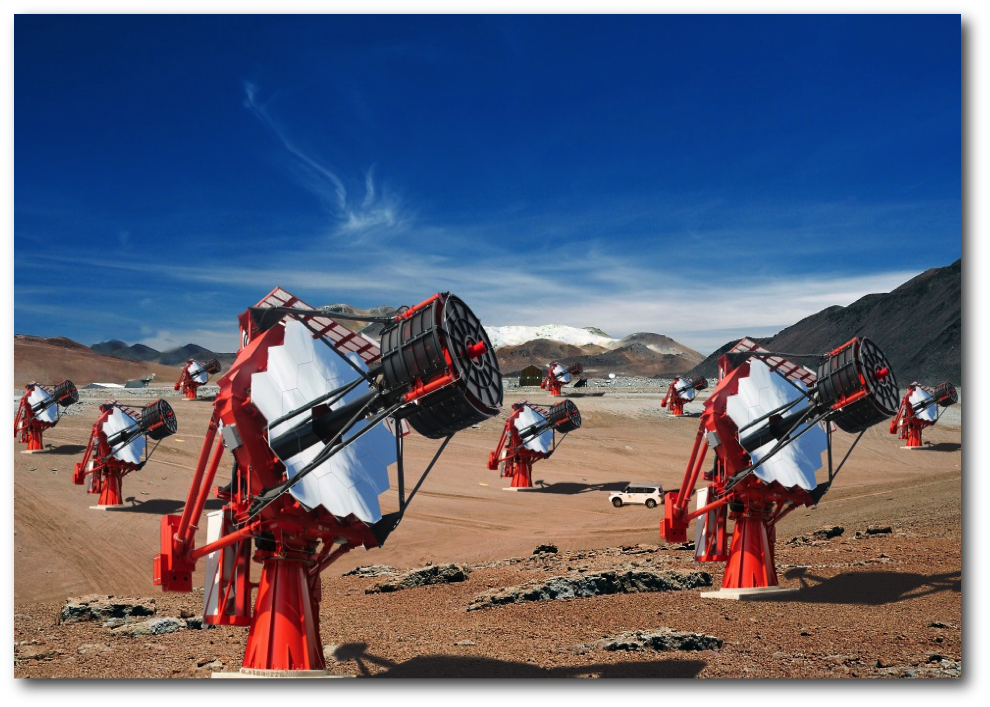
|
The Cherenkov Telescope Array Project
The Cherenkov Telescope Array (CTA) Project is a worldwide project aimed to build the next generation Imaging Air Cherenkov Telescope (IACT) devoted to reveal very high energy gamma-rays from astrophysical sources. CTA will be able to explore the Universe between 10 GeV up to hundreds of TeV. In order to observe the full sky, the CTA project will include one array in each hemisphere: the CTA northern site (CTA North) will be host in the Canary island of La Palma, at the Observatory of Roque de los Muchachos (where the MAGIC telescopes are currently located), whilst the CTA South array will be built in the Atacama Desert (the selected site is less than 10 km southeast of the ESO's Paranal Observatory).
The aims of the CTA can be roughly grouped into three main themes, serving as key science drivers:
The whole array will serve as an open observatory to a wide astrophysics community and will provide a deep insight into the non-thermal high-energy universe. CTA is expected to be able to work in synergy with space-based observatories and other ground-based instruments which operate at a lower energy range. Moreover, it will also be involved in multi-messenger cosmic rays, neutrinos and gravitational waves searches. The design foresees a factor of 5-10 improvement in sensitivity with respect to the current IACTs experiments (MAGIC, HESS and VERITAS), a broad-band energy range cover (almost 4 decades), and arcmin angular resolution at very high energies above 1 TeV. In order to cover this very wide energy range, CTA will be composed by three different Cherenkov telescopes: a few Large Size Telescopes (LST), covering the lower energy band, the Medium Size Telescopes and the Small Size Telescopes (SST), spread over several square kilometres for the rate-limited highest energies. The pre-construction phase, with the development of the first prototypes, will finish at the end of 2016. The first telescopes onsite are foreseen for 2019.
The ASI-SSDC, through its members of the INAF-OAR, participates to the CTA Project
by contributing to the following working groups:
The main activities carried on by members of SSDC/INAF-OAR within these
working groups are:
The SSDC/INAF-OAR group is also involved in the activities of the ASTRI Project (Astrofisica con specchi a tecnologia replicante italiana), dedicated to the construction of an end-to-end prototype of the CTA small-size telescope in a dual-mirror Schwarzschild-Couder configuration (ASTRI SST-2M). A mini-array of SST-2M precursors, composed of nine telescopes, will be installed at the chosen CTA Southern site in the next few years, and it will represent the first seed of the CTA South array. Within the ASTRI Project, the OAR group is in charge of the development of whole data reduction and scientific analysis software, both for the ASTRI prototype and the mini-array, and the realisation of the scientific data archive system. Since 2013 also INFN is a member of the CTA Project. While the INFN in general provides a very important experimental contribution to CTA (photo-sensors as well as several other detector developments), the SSDC/INFN members of CTA are foreseen to involve in more data oriented activities (simulations, data handling, development, optimization and performing of data analysis), fully integrated in the SSDC efforts for the CTA development.
|
|


